How to Make (Almost) Anything
How to Make (Almost) Anything is an MIT Media Lab class that I was very very lucky to take. It was my introduction to almost all things fabrication. I had done some laser cutting and machining before, but no electronics, programing, molding, casting. I documented all projects on my class webpage and the captions in the slideshow below link to full project pages.
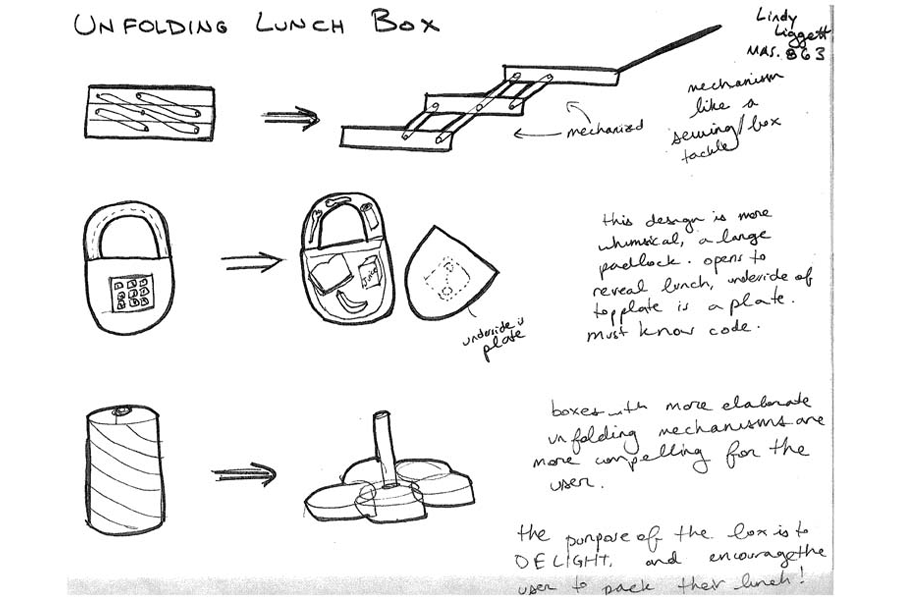
Week 1: Final Concept
I love lunchboxes, and when I started the class I thought my final project might be a neat lunchbox that might unfold or have a secret compartment.
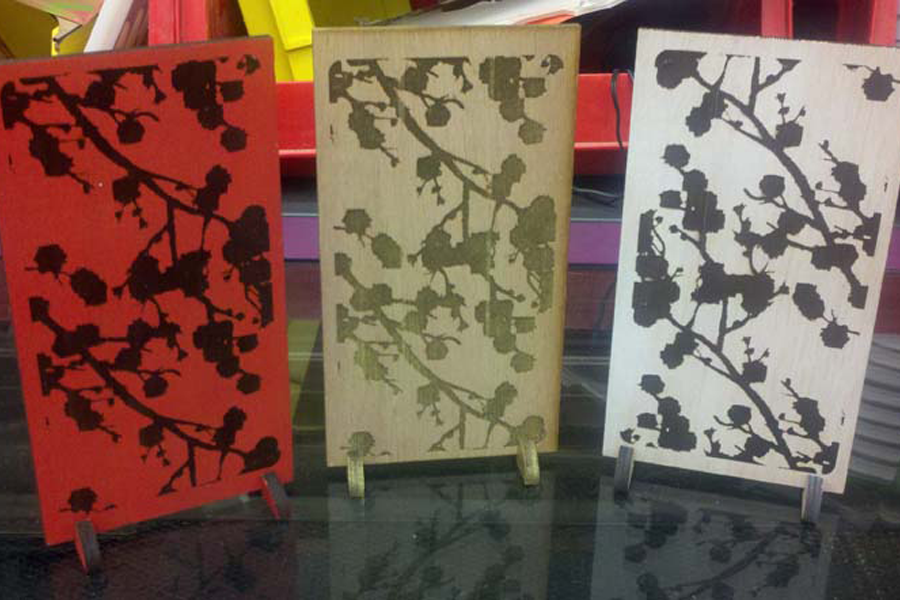
Week 2: Vector Cutting
This week's project was to create a press fit construction kit. Because I already had experience using a laser cutter, I used my time to learn Photoshop to make better etching artwork. I made these small 'privacy screens', inspired by Japanese rice paper screens. You could bring them in your backpack and put them up at the library.
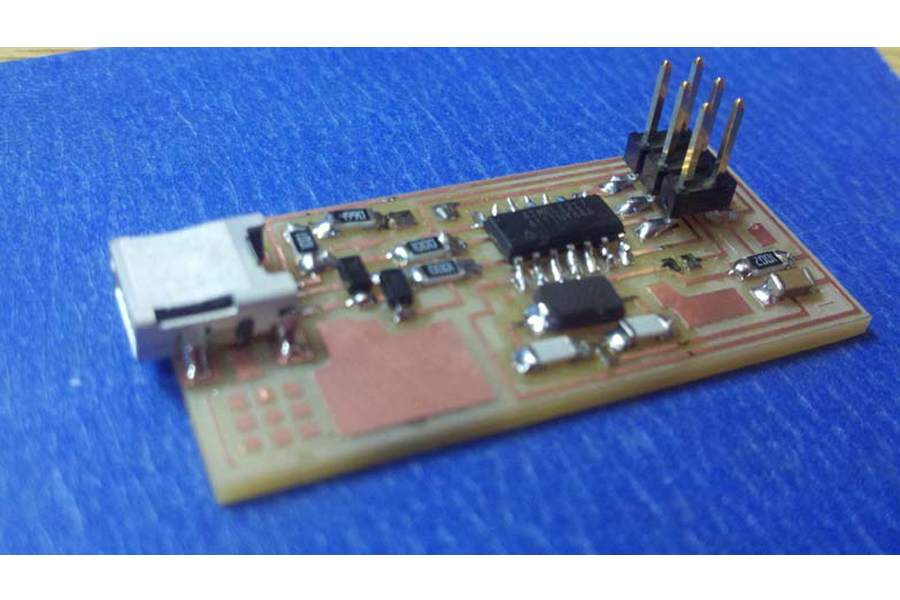
Week 3: Electronics Production
This week, the image files were given to us to make a fabISP board. I used a Roland Modela to mill FR4 board to this design, and had my first soldering experiences. My biggest lesson was to write out all components I would need next to a piece of double stick tape. I could easily inventory what I needed for the project, and what I had already put on the board.
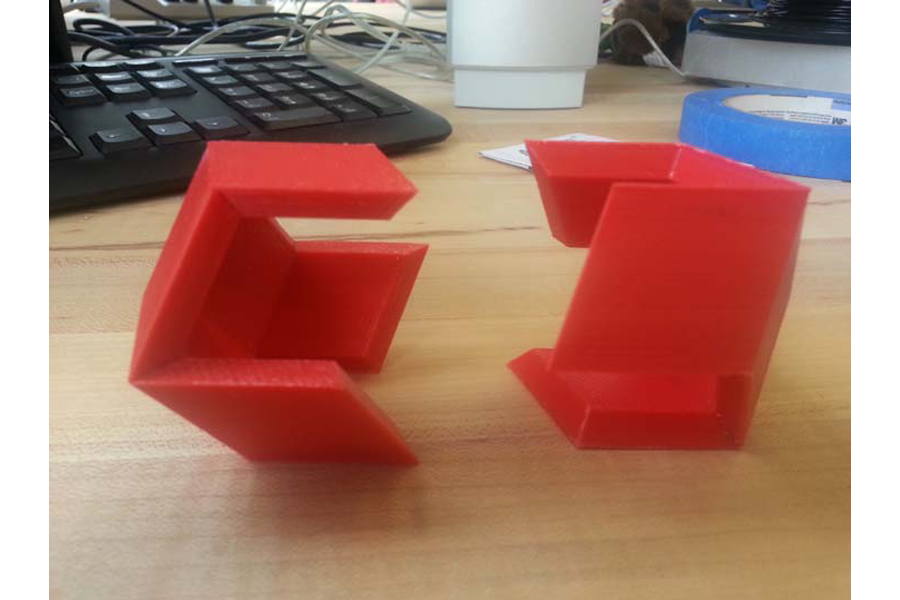
Week 4: 3D Printing and Scanning
This week, I 3D printed on a Dimension a little puzzle from a woodworking pattern. I made it in two pieces (red puzzle shown) and as twelve identical pieces (not shown).
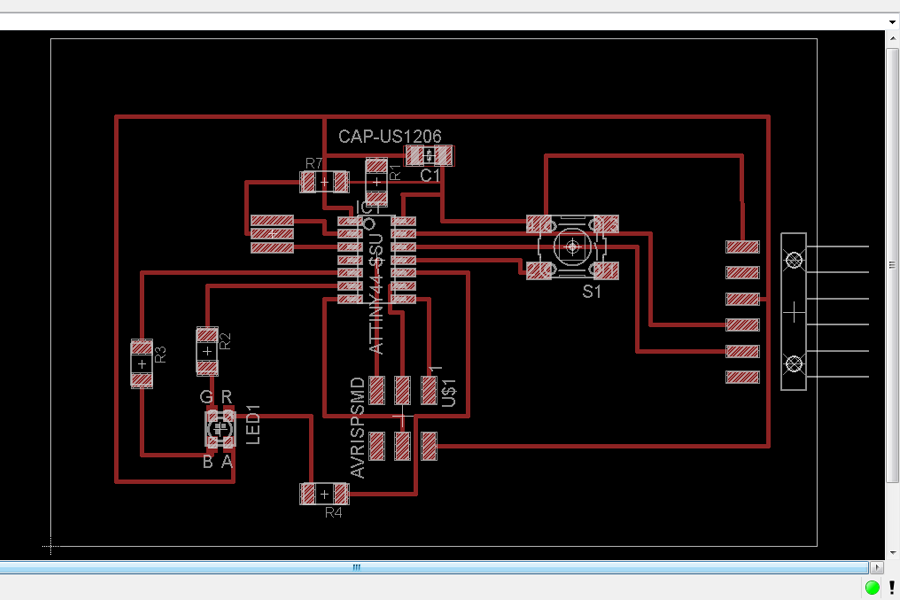
Week 5: Electronics Production
This week's project was to make another board whose schematic was given, so we designed the layout. It was my first time using EAGLE, a software package I grew to appreciate, then tolerate.
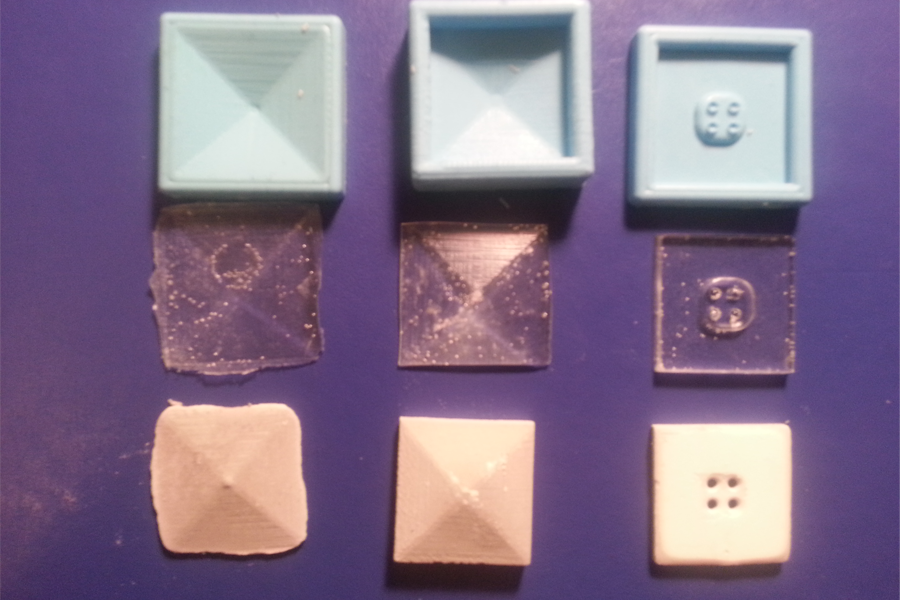
Week 6: Molding and Casting
I used a Roland Modela to mill out wax positives for silicone molds to make rigid buttons (shown). Then I milled out wax molds to make silicone pyramid studs that could fit over existing coat buttons.
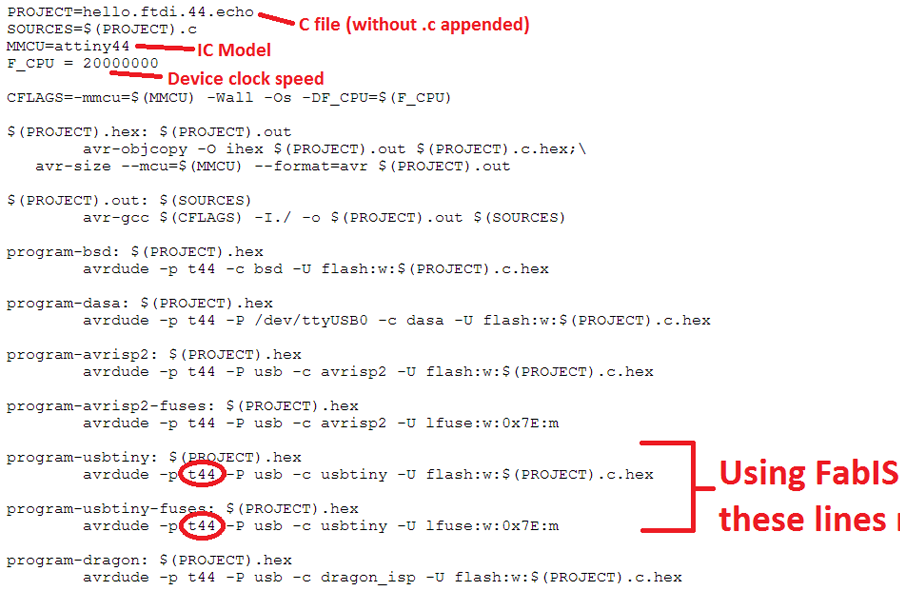
Week 7: Embedded Programming
This was my first time writing code for a microcontroller. It was an adventure that I tell in gifs on the project page.
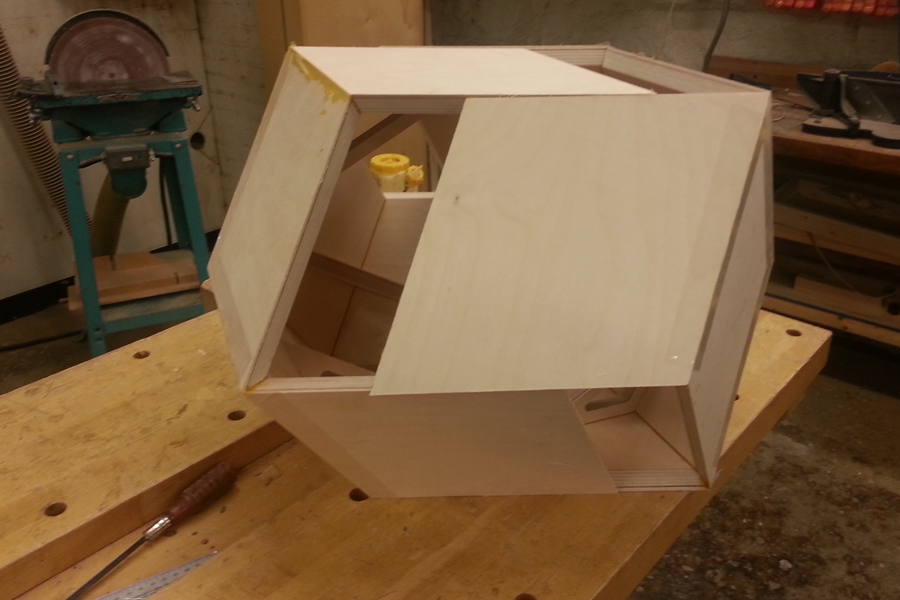
Week 8: Computer-Controlled Machining
I used a Techno Router (like a ShopBot) to make a human-sized version of the puzzle I made in Week 4 (3D printing).
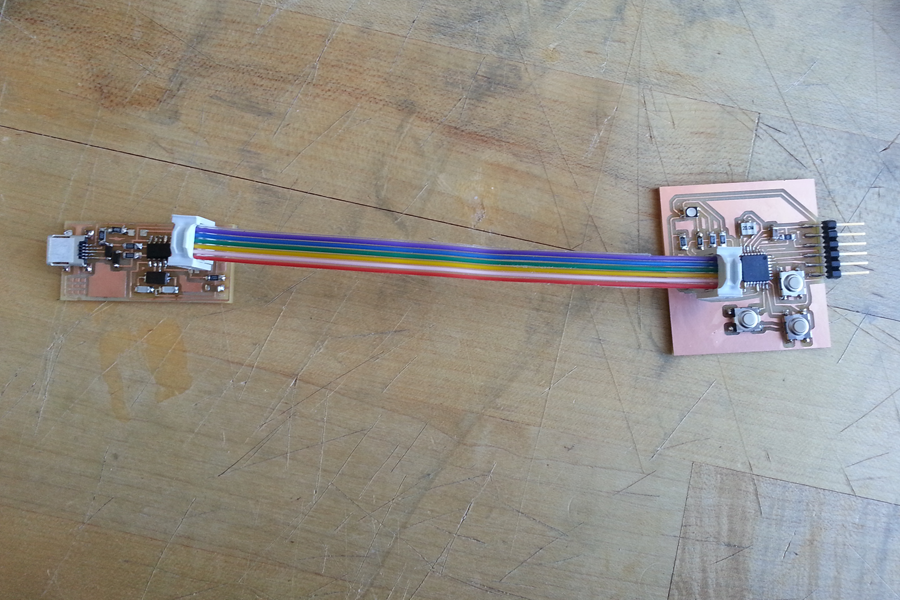
Week 9: Input Devices
Because my Week 7 assignment already used an input, I scaled that up to a board with multiple inputs, and the logic to support that.
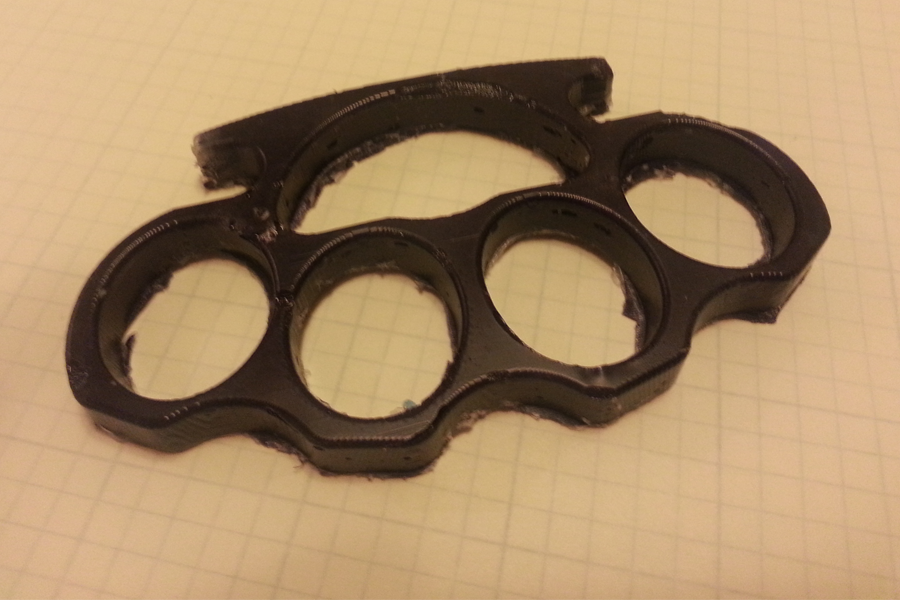
Week 10: Composites
I made brass knuckles out of thread and fabric. I made them many ways and none of them fully succeeded but I know how I'd make it in the future!
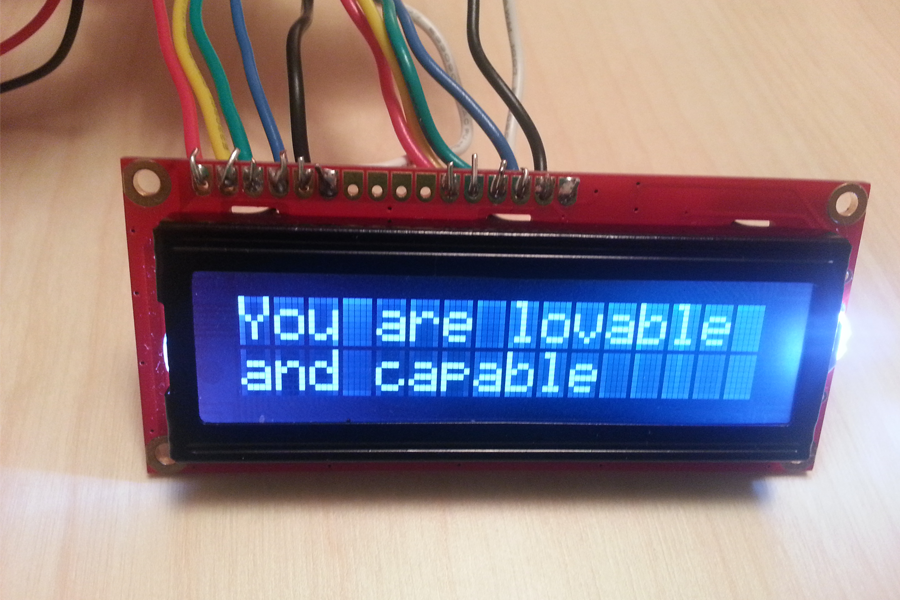
Week 11: Output Devices
This is my favorite project: a fortune-teller for my baby brother. There are three buttons - one outputs encouraging messages, one is like a magic 8 ball, and the other is wardrobe advice. Full video and more images on project page.
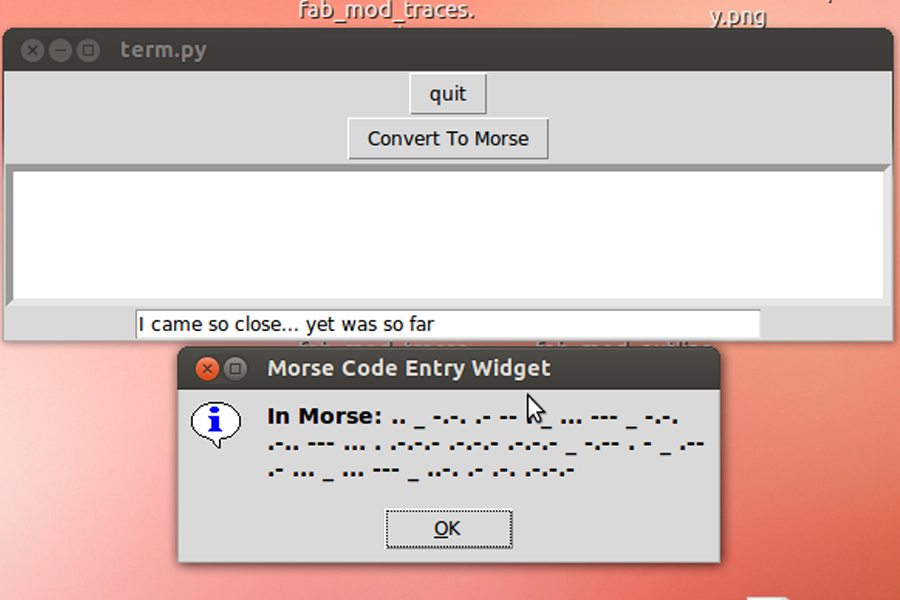
Week 12: Interface Application and Programming
I made a python interpreter that changed text into morse code, which could be given to an LED. The goal was to hook this up to IR led and receiver to be able to transmit secret messages, but I ran out of time.
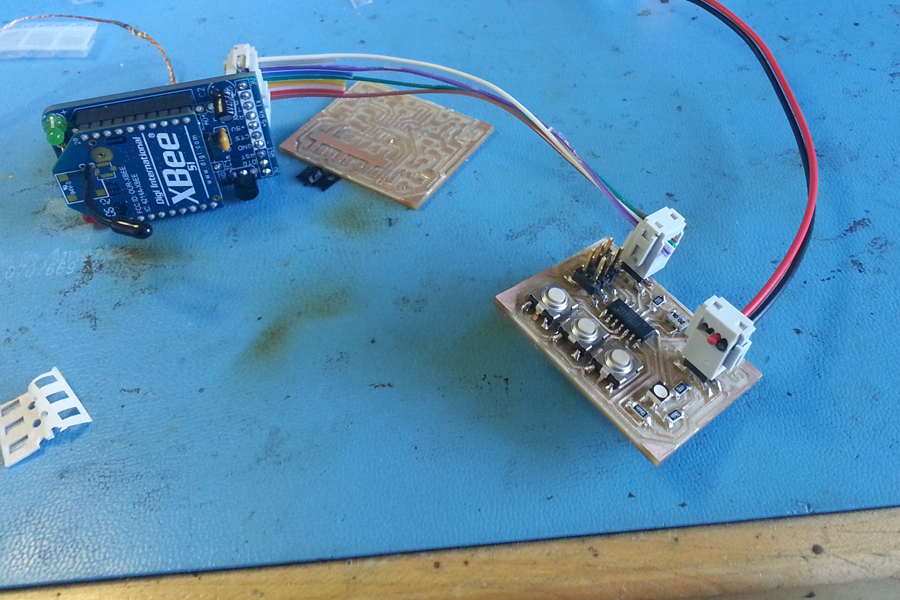
Week 13: Networking and Communications
This was my most frustrating week. I wanted two XBee's to talk in preparation of my final project. I had it working once but never again. The page documents the iterations of trying to get them to work.
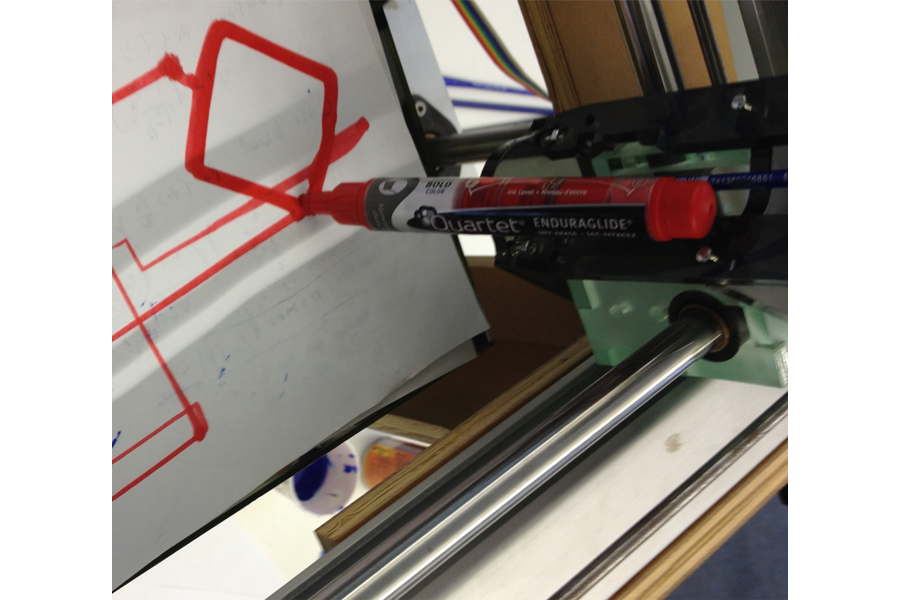
Week 14: Make a Machine that Makes Something
This was done as a group. My group made a new head for Ilan Moyer's Fab in a Box that was a paint brush. I made the attachment for the bed that held paint jars, using a laser cutter.
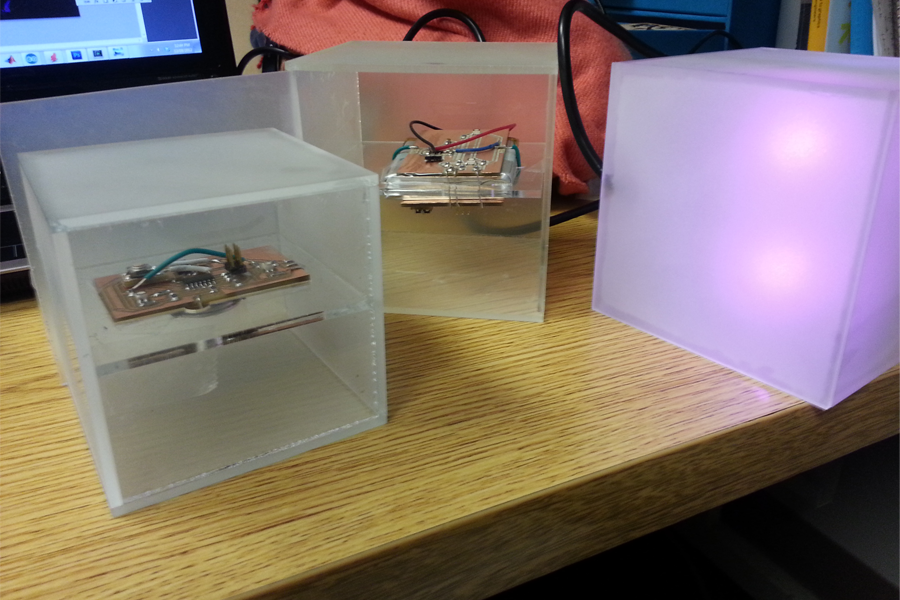
Final Project
My final project was an LED light cube that changed different colors on different sides. In theory two would communicate with one another, but I couldn't resolve issues with that. I used the cube in some neat long-exposure photographs, though!
© Lindy Liggett 2014, All Rights Reserved